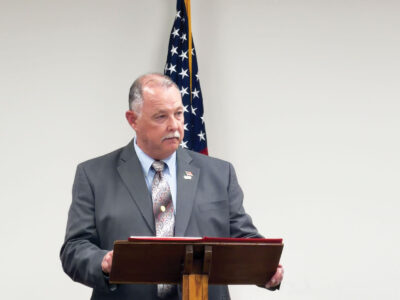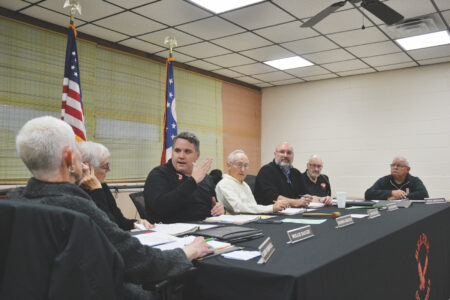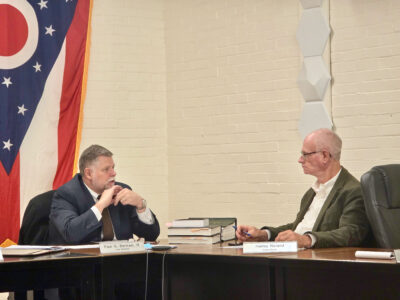Rural areas fight for high speed internet signals


Local eyes are on targeting expiring coronavirus stimulus funds to install high-speed internet wireless signal in the most rural parts of Washington County, and prove to Washington, D.C., that Appalachia is done waiting.
“When I read that in the (Wednesday Times) story, that this test could be used to spend those CARES act dollars now and get coverage of a whole township, that’s huge, that’s almost immediate,” said Washington County Engineer Roger Wright this week. “I think people are so tired of hearing the word ‘broadband’ because it’s never produced something besides another agency’s study.”
Tuesday, Glenn Fishbine, of GEO Partners LLC, explained that with the public’s participation in a free speed test/free log of no internet service, the proof is in the pudding.
He now has enough data from Adams Township residents to design the best placement of four towers to cover the township — 493 households — in a minimum speed of 25 megabits-per-second internet speed.
The price tag? Only an estimated $250,000, instead of $4 million for completely wired to each home.
“We’re the first county in Ohio to have this kind of data, and it is meaningful because people feel like they’re actually involved and represented,” said David Brown, a founding member of the Southeast Ohio Broadband Cooperative which engaged GEO Partners LLC to run this test. “There you go Rufus Putnam, we’re continuing your legacy to be the first in Ohio.”
Now, to get the final households needed to accurately represent each township in Washington County and prove Federal Communications Commissions maps of internet access wrong, Brown and Peggy Bailey (another founding board member of the cooperative) are turning to a page in the election day proverbial handbook.
The pair are utilizing public voting record data from the Washington County Board of Elections to directly call a minimum of 312 households needed in Aurelius, Belpre, Dunham, Fairfield, Grandview, Independence, Lawrence, Liberty, Ludlow and Palmer townships.
“I say go directly to the people,” agreed Brown. “You have to be sincere.”
This practice follows past election day traditions of both major parties, gathering around dining room tables and calling registered voters to ask if they’ve made it to the polls.
Only this time the question is simpler, do you have internet at home?
“We don’t have internet,” said Aurelius Township Trustee Denver Hesson, when contacted by the Times Friday. “Some people have it, but we never got it. My son has it, but it’s not any good up here.”
With the use of Hesson’s address, Brown immediately logged the lack of service as a data point into the collection, dropping the need within Aurelius Township (for additional household representation) down to 56 more homes.
And now that Bailey and Brown are set up with voter records, if the person answers their call and says “no, they don’t have internet,” that address can be immediately logged without further action needed by the person answering.
“This way we can make calls and find out if they have internet or not,” said Bailey. “I think it’s a good idea. I don’t mind making some calls to try and get it narrowed down.”
But the public can still complete the work faster by voluntary participation in the following ways:
If you do have internet at home: take the free speed test on your home computer. The test can be found at www.seobc.us.
If not:
a. Call 740-538-0084 and leave a message identifying your address, and say you do not have internet.
b. Text 740-538-0084 and leave a message identifying your address, and write that you do not have internet.
c. Email email seobc@gmail.com from your mobile device, work computer, neighbor’s computer or a computer at your local library: identifying your home address and share that you do not have internet at home.
READ MORE
¯ How we got here: “Speed Test: Group pushes for data to provide better broadband” (Published Oct. 7).
¯ Early growth in participation: “Take the speed test, document internet access” (Published Oct. 9).
¯ Phone number option added: “Thousands more needed for internet speed test” (Published Oct. 10)
¯ Targeting of specific townships needed: “I have sufficient data to do an analysis today, but this is not sufficient to convince the FCC,” explained Fishbine in “Internet speed test proponents seek more participation” (Published Oct. 15).
¯ Township focus shows progress, and greater need: “Concerned residents are given the opportunity to refute internet service providers claims” (Published Oct. 21).
¯ Appalachian Speed Test Challenge in rivalry with West Virginia: “Mid-Ohio Valley reviews reaches of provided internet” (Published Oct. 22).
¯ Cut the billion-dollar wired broadband pricetag by up to one-sixteenth the cost: “Internet speed test seeking 350 more participants” (Published Oct. 28).
Remaining participation need as of Friday:
¯ Aurelius Township needs a minimum of 56 more households in order to be accurately represented through statistic validation.
¯ Belpre Township needs a minimum of 41 more households.
¯ Dunham Township needs a minimum of 29 more households.
¯ Fairfield Township needs a minimum of 42 more households.
¯ Independence Township needs a minimum of 34 more households.
¯ Liberty Township needs a minimum of 41 more households.
¯ Ludlow Township needs a minimum of 36 more households.
¯ Palmer Township needs a minimum of 32 more households.
This week, Grandview and Lawrence townships reached statistic validation.
Church leaders, township trustees and volunteer firefighters in the above townships are challenged to also lead their residents to be accurately represented.
Janelle Patterson may be reached at jpatterson@mariettatimes.com.



